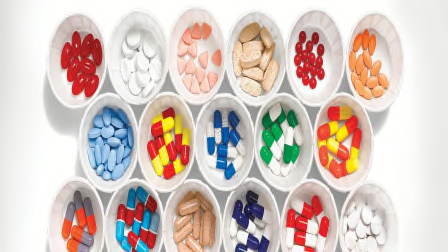6 Steps That Can Help Prevent a Stroke
About 80 percent of all strokes are preventable. Here are the meds, foods, and moves that are key

Every 40 seconds, someone in the U.S. has a stroke, and about three-quarters occur in people ages 65 and older. "As people age, their arteries have a tendency to become less flexible," and clogged arteries are more likely, says Doris Chan, DO, an interventional cardiologist at NYU Langone Hospital-Brooklyn. This hikes the risk of an ischemic stroke—the most common type—when a blood vessel to the brain becomes blocked by a blood clot.
But about 80 percent of all strokes are preventable, according to the Centers for Disease Control and Prevention. And the lifestyle steps you take can be especially powerful in fending off stroke. Here’s what you can do now to reduce your risk.
Keep an Eye on These Issues
Keeping certain conditions at bay or managing them properly can cut the likelihood of a stroke. Take high blood pressure, for example, which some research suggests is responsible for almost half of all strokes. A heart-healthy eating plan may help control it. Also try to limit sodium to less than 1,500 mg a day, maintain a healthy weight, and exercise regularly, says Sahil Khera, MD, an interventional cardiologist at the Mount Sinai Hospital in New York City.
Get Enough Physical Activity
Exercise can help you maintain a healthy weight, and being overweight or obese is itself a stroke risk—especially for those who carry a lot of fat around the middle. (Even normal-weight women with abdominal fat may have a higher stroke risk, the American Stroke Association says.)
The CDC recommends at least 150 minutes of moderate activity, such as walking, each week. Small bursts of movement, like vacuuming, count, Goldberg says. And stay on your feet as much as you can. A study in the Journal of the American Medical Association in 2022 found that people who sat for 13 hours a day or more had a 44 percent higher risk of stroke.
If you’ve been very inactive, start slowly, adding 500 steps at a time. "You don’t have to get them in all at once," says Erin Dooley, PhD, an assistant professor of epidemiology at the University of Alabama at Birmingham School of Public Health. "Just walking down the hallway every so often will have benefits."
Eat for Health
The best way to eat for stroke prevention is probably the Mediterranean diet and reduced salt intake, Khera says. The diet is rich in whole grains, fruits, vegetables, and legumes, plus heart-friendly fats like olive oil and small amounts of animal protein, particularly fish. Among the studies on the Mediterranean diet is one published in the Lancet in 2022, which looked at people with heart disease. It found that among those who followed this eating pattern for seven years, the risk of a major cardiovascular event like a heart attack or stroke fell by 26 percent compared with those on a low-fat diet.
Watch Your Alcohol Intake
Generally, high alcohol consumption (more than 14 drinks for women and more than 21 for men per week) is linked to a higher stroke risk, according to a study published last January in the journal Neurology. Most older adults should limit their intake to one drink per day, Goldberg says.
And space those drinks out. Binge drinking, which the CDC defines as four or more alcoholic beverages in a short period of time for women and five or more for men, raises heart attack and stroke risk, Goldberg says.
And if you smoke, work toward stopping. While smoking doubles the likelihood of dying from a stroke, the risk goes down to that of a nonsmoker’s in as little as five years after quitting.
Avoid Pollutants
Even short-term exposure to air pollution may raise your stroke risk, according to a review published in 2022 in the journal Stroke. So check the air quality in your area on sites like airnow.gov, and on high-pollution days, limit your time outdoors. When indoors, use exhaust fans in the bathroom and kitchen, vent clothes dryers, and consider an air purifier.
Control Stress
High stress is associated with an increased stroke risk, says research that was published in 2022 in the Journal of the American Medical Association Network Open. The study found that one stressful life event raised the likelihood of stroke by 17 percent, while two hiked it to 31 percent.
To ease stress, Goldberg recommends using mindfulness-based apps such as Smiling Mind, which lets you do calming meditation whenever you want. A 2020 study published in the International Journal of Environmental Research and Public Health found that these apps may also help reduce blood pressure, a key stroke risk factor.
What's a Mini-Stroke?
If you think you might be having a transient ischemic attack (a mini-stroke), call 911. You should be evaluated immediately. Almost 1 in 5 people with a possible TIA will have a full stroke within three months. "It’s hard to diagnose a TIA for sure," Amin says. Symptoms often fade by the time people reach an ER. Here are key tests that may be done there:
- Brain and blood vessel imaging. MRIs show that up to 40 percent of people whose symptoms have resolved have, in fact, had a stroke, which probably hikes their future stroke risk, says Amin, author of a recent AHA Scientific Statement on TIAs.
- Blood work to rule out hypoglycemia and to screen for conditions such as diabetes and high cholesterol.
- An electrocardiogram to check heart rhythms if a TIA is suspected.
TIA patients are likely to be prescribed aspirin and meds for risk factors like high blood pressure. They should see a neurologist, ideally within 48 hours of discharge. "There’s a high risk of stroke in the days following a TIA," Amin says.
Know These Danger Signs
It’s important to know the signs of a stroke and to get emergency help right away if you experience them. The American Stroke Association uses the acronym FAST to help people remember several key signs. They are:
- F for face drooping
- A for arm weakness
- S for speech difficulty
- T for time to call 911
Some people may have additional symptoms as well. These can include the following:
- Numbness of the face, arm, or leg, especially on one side of the body
- Confusion
- Trouble seeing
- Trouble walking
- Severe headache
If you notice any of those symptoms, call 911 immediately (or have someone call), even if they’re mild and subside within a minute or two, as they often do with a mini-stroke.
Editor’s Note: A version of this article also appeared in the June 2023 issue of Consumer Reports On Health.




















